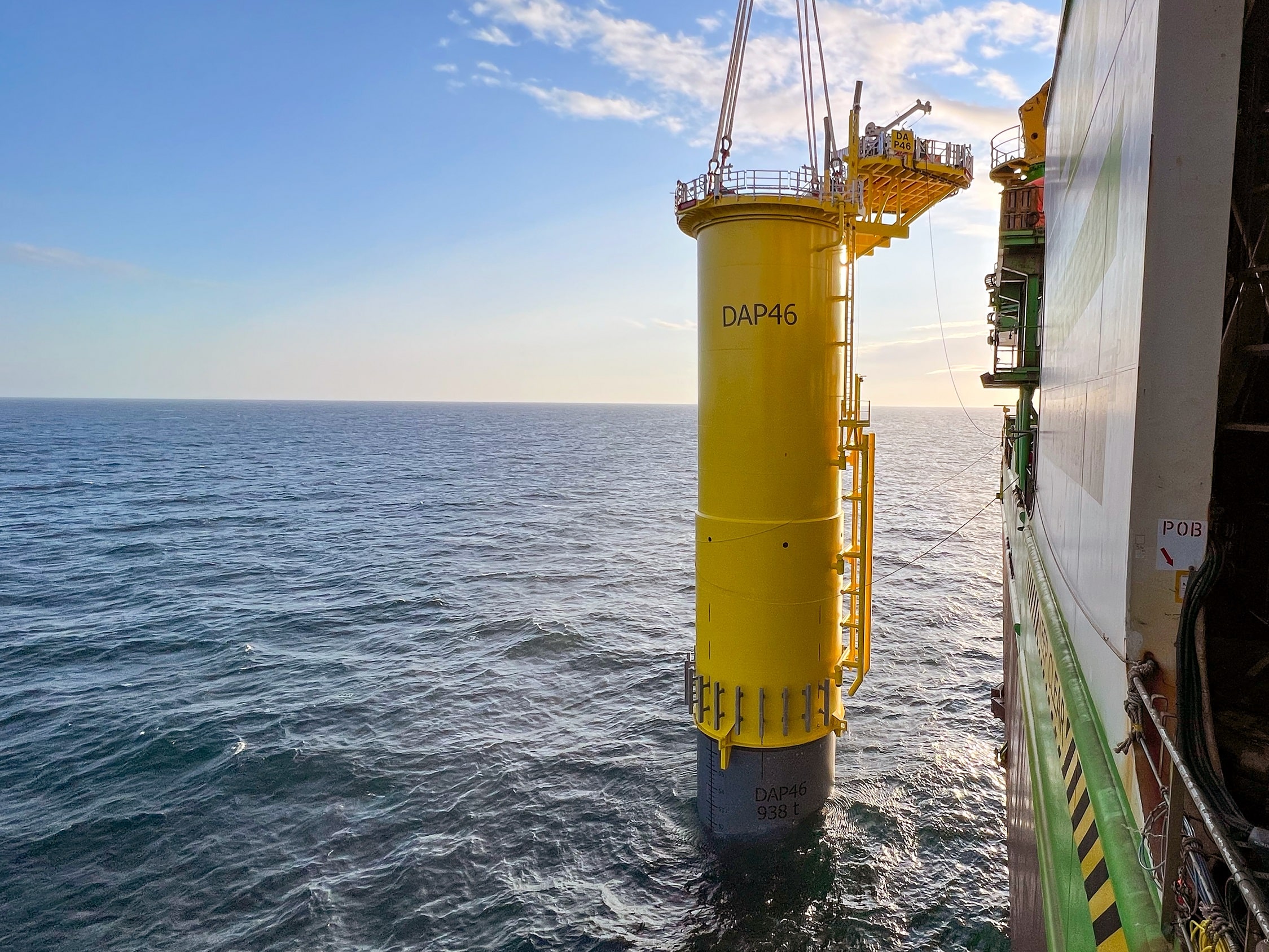Work has started on the installation of 277 of some of the world’s largest offshore wind turbine foundations in the North Sea, in what is another major milestone for the 3.6GW Dogger Bank Wind Farm, which is being developed 80 miles off the Yorkshire coast.
The world-class renewable energy project, which will be capable of powering 6 million UK homes annually on completion, is a joint venture between SSE Renewables, Equinor and Eni Plenitude. SSE Renewables is lead operator for the development and construction of Dogger Bank Wind Farm, while Equinor will be lead operator of the wind farm on completion for its expected operational life of around 35 years.
The campaign to install turbine foundations at what will be the world’s largest offshore wind farm has commenced in recent days, with the installation of the first monopile and transition piece on Dogger Bank A. The installation campaign is being led by Seaway 7 supported by DEME.
The turbine foundations for Dogger Bank Wind Farm are UK-designed and feature a unique split-level transition piece, as well as a world’s-largest 8-meter flange – or projecting flat rim – to support the turbine towers. Installation of GE Renewable Energy’s ground-breaking Haliade-X turbines onto each of the installed turbine foundations will commence from Spring 2023.
Steve Wilson, SSE Renewables Project Director for Dogger Bank Wind Farm, said:
“These foundations have been designed for what is arguably the most demanding wave environment to be encountered on an offshore wind farm and are a testament to the many companies involved in collaborating to reach this unprecedented milestone.
“As well as the sheer scale of the foundations, we’ve incorporated a unique split-level transition piece which allows safe access for technicians directly into the turbine tower from our service and operations vessels, eliminating thousands of manual handling activities and lifting operations over the lifetime of the assets.
“Successful installation of our first monopiles and transitions pieces is a giant leap for offshore wind globally and will lay the foundations for Dogger Bank Wind Farm to contribute to meeting the UK’s net zero target, enabling the development of a future energy system that is cleaner, cheaper and more secure. It also demonstrates the continued innovation in our sector as we begin to install the increasingly larger and more powerful turbines that are needed to fuel our homes and businesses safely and securely in a net zero world.”
Designed in the UK by experts from Wood Thilsted, the foundations have been optimised to tackle challenging wave loads in the Dogger Bank area of the North Sea, with installation in water depths of up to 32m and at a distance of 130km from shore, and provide a solid and stable base for the scale of the GE Renewable Energy’s groundbreaking Haliade-X turbines.
Wouter van Dalen, Project Director, Seaway 7, said:
“The successful installation of the first Dogger Bank foundation marks the start of a multi-year installation campaign for Seaway 7. In good cooperation with our client Dogger Bank Wind Farm and our partners and suppliers, this complex project has been prepared for installation with a number of different heavy lift vessels, starting with DEME’s Innovation. Seaway 7 is proud to be part of the team that is constructing the Dogger Bank project and is looking forward to safely installing the remaining 276 foundations.”
Lucien Romagnoli, Business Unit Director Renewables at DEME Offshore, said:
“We are extremely proud to be supporting the construction of the world’s largest offshore wind farm with foundation installation and later in the programme as inter-array cable installer. These unique foundations are huge but also, they are technically complex. This is an important moment for the offshore wind industry and the energy transition. It is wonderful to be working alongside like-minded partners with the joint goal of achieving a net-zero energy system.”


